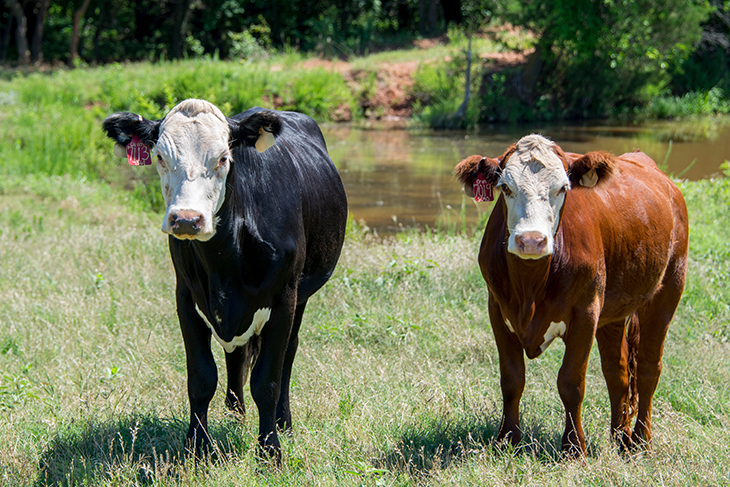
Ensure fall-calving replacement heifers are ready for the breeding season
Monday, September 16, 2019
Cattle producers who employ fall calving in their herds currently should be making certain replacement heifers to be used in late November are ready.
Producers should be working with their large animal veterinarian to ensure their yearling replacement heifers are properly immunized. Replacement heifers should be immunized for respiratory diseases such as Infectious Bovine Rhinotracheitis and Bovine Viral Diarrhea.
“IBR is a highly contagious, infectious respiratory disease that can affect young and older cattle,” said Dr. Barry Whitworth, Oklahoma State University veterinarian and Oklahoma Cooperative Extension Service food animal quality and health specialist. “In addition to respiratory disease, the virus can cause a number of systemic ailments, including abortions.”
BVD is a disease in cattle and other ruminants caused by the bovine viral diarrhea virus, and may cause resorption, abortion and stillbirth. Congenitally infected fetuses that survive may be born as infected calves.
“The infection in these calves will persist throughout the animal’s entire life, and they will shed BVDV continuously in the farm or ranch environment,” Whitworth said.
Replacement heifers should be vaccinated at least one month before the start of the breeding season.
“This would be a good time to include other reproductive disease protection that may be recommended by your veterinarian,” Whitworth said. “Examples of other immunizations that should be considered include leptospirosis and campylobacter, sometimes called vibriosis.”
Also, weigh the heifers if a set of scales is available. There is time to make adjustments to the supplementation being fed to the heifers to ensure they meet the target weight at the start of the breeding season. OSU animal science research from 2009 showed replacement heifers should weigh 60 percent or more of their mature weight to ensure a high percentage of heifers are cycling at the start of the breeding season.
“If these heifers will eventually grow into 1,200 pound cows, they must weigh 720 pounds at the beginning of the estrous synchronization and artificial insemination, or bull turn-out if natural breeding is used,” said Glenn Selk, OSU Cooperative Extension animal scientist emeritus and managing editor of the university’s popular Cow-Calf Corner newsletter.
Calculate the weight gain needed between now and the start of the breeding season to see if additional energy is required to achieve the desired weight gain. Some producers may choose to grow heifers at a lower rate and attempt to breed them at 55 percent or lower of their estimated mature weight.
“In this scenario, about twice as many heifers need to be raised, synchronized and inseminated in order to ensure adequate numbers are bred in a timely manner to meet the future needs of the herd,” Selk said.
All replacement heifers need to be pregnancy checked about 60 days after the breeding season so that non-pregnant heifers can be marketed as soon as possible.
“A number of smaller cow-calf operations will not have scales available to monitor weight gain,” Selk said. “The next best evaluation tool is to monitor body condition of the heifers. If all of the heifers are in a body condition score of six, then they should meet the desired target weight.”
Ribs will be fully covered and not noticeable to the eye in a heifer with a body condition score of six. Hindquarters will be plump and full. There will be noticeable sponginess over the foreribs and on each side of the tail head.
“Given adequate summer forage, heifers should need only a small amount of protein supplement, say one to two pounds of high protein – about 40 percent protein – supplement per head per day to maintain adequate body condition going into the breeding season,” Selk said.
The Oklahoma Cooperative Extension Service is one of two state agencies administered by OSU’s Division of Agricultural Sciences and Natural Resources, and is a key part of the university’s state and federally mandated teaching, research and Extension land-grant mission.
MEDIA CONTACT: Donald Stotts | Agricultural Communications Services | 405-744-4079 | donald.stotts@okstate.edu
